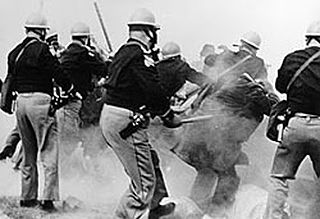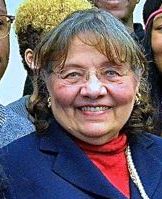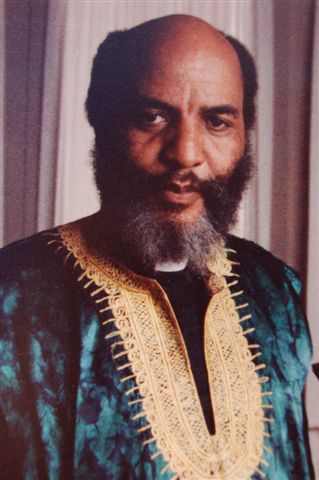Related Research Articles

Selma is a city in and the county seat of Dallas County, in the Black Belt region of south central Alabama and extending to the west. Located on the banks of the Alabama River, the city has a population of 17,971 as of the 2020 census. About 80% of the population is African-American.

The Southern Christian Leadership Conference (SCLC) is an African-American civil rights organization based in Atlanta, Georgia. SCLC is closely associated with its first president, Martin Luther King Jr., who had a large role in the American civil rights movement.

The Selma to Montgomery marches were three protest marches, held in 1965, along the 54-mile (87 km) highway from Selma, Alabama, to the state capital of Montgomery. The marches were organized by nonviolent activists to demonstrate the desire of African-American citizens to exercise their constitutional right to vote, in defiance of segregationist repression; they were part of a broader voting rights movement underway in Selma and throughout the American South. By highlighting racial injustice, they contributed to passage that year of the Voting Rights Act, a landmark federal achievement of the civil rights movement.

Amelia Isadora Platts Boynton Robinson was an American activist and supercentenarian who was a leader of the American Civil Rights Movement in Selma, Alabama, and a key figure in the 1965 Selma to Montgomery marches.
James Forman was a prominent African-American leader in the civil rights movement. He was active in the Student Nonviolent Coordinating Committee (SNCC), the Black Panther Party, and the League of Revolutionary Black Workers. As the executive secretary of SNCC from 1961 to 1966, Forman played a significant role in the Freedom Rides, the Albany movement, the Birmingham campaign, and the Selma to Montgomery marches.

Diane Judith Nash is an American civil rights activist, and a leader and strategist of the student wing of the Civil Rights Movement.

James Luther Bevel was an American minister and leader of the 1960s Civil Rights Movement in the United States. As a member of the Southern Christian Leadership Conference (SCLC), and then as its Director of Direct Action and Nonviolent Education, Bevel initiated, strategized, and developed SCLC's three major successes of the era: the 1963 Birmingham Children's Crusade, the 1965 Selma voting rights movement, and the 1966 Chicago open housing movement. He suggested that SCLC call for and join a March on Washington in 1963 and strategized the 1965 Selma to Montgomery marches which contributed to Congressional passage of the 1965 Voting Rights Act.

James Gardner Clark, Jr. was the sheriff of Dallas County, Alabama, United States from 1955 to 1966. He was one of the officials responsible for the violent arrests of civil rights protestors during the Selma to Montgomery marches of 1965, and is remembered as a racist whose brutal tactics included using cattle prods against unarmed civil rights supporters.

Bernard Lafayette, Jr. is an American civil rights activist and organizer, who was a leader in the Civil Rights Movement. He played a leading role in early organizing of the Selma Voting Rights Movement; was a member of the Nashville Student Movement; and worked closely throughout the 1960s movements with groups such as the Student Nonviolent Coordinating Committee (SNCC), the Southern Christian Leadership Conference (SCLC), and the American Friends Service Committee.
Colia L. Liddell Lafayette Clark was an American activist and politician. Clark was the Green Party's candidate for the United States Senate in New York in 2010 and 2012.
The Summer Community Organization and Political Education (SCOPE) Project of the Southern Christian Leadership Conference (SCLC) was a voter registration civil rights initiative conducted from 1965 to 1966 in 120 counties in six southern states. The goal was to recruit white college students to help prepare African Americans for voting and to maintain pressure on Congress to pass what became the Voting Rights Act of 1965. Dr. Martin Luther King announced the project at UCLA in April 1965, and other leaders recruited students nationwide.
Marie Priscilla Martin Foster was a leader in the Civil Rights Movement in the U.S. during the 1960s. Her successful voter registration in Dallas County, Alabama fueled her to become an activist, and she began teaching adult classes to help people pass the required literacy tests. She was the Alabama foot soldier that convinced Martin Luther King Jr. to come to Selma, Alabama and helped organize the Selma to Montgomery marches in 1965. Her dedication gave her the moniker "The Mother of the Voting Rights Movement," which was shortened to Mother Foster.
Prathia Laura Ann Hall Wynn was an American leader and activist in the Civil Rights Movement, a womanist theologian, and ethicist. She was the key inspiration for Martin Luther King Jr.'s "I Have a Dream" speech.

Charles Melvin Sherrod was an American minister and civil rights activist. During the civil rights movement, Sherrod helped found the Albany Movement while serving as field secretary for southwest Georgia for the Student Nonviolent Coordinating Committee. He also participated in the Selma Voting Rights Movement and in many other campaigns of the civil rights movement of that era.

The Edmund Pettus Bridge carries U.S. Route 80 Business across the Alabama River in Selma, Alabama. Built in 1940, it is named after Edmund Pettus, a former Confederate brigadier general, U.S. senator, and state-level leader of the Alabama Ku Klux Klan. The bridge is a steel through arch bridge with a central span of 250 feet (76 m). Nine large concrete arches support the bridge and roadway on the east side.
Annie Lee Wilkerson Cooper was an African-American civil rights activist. She is best known for punching Dallas County, Alabama Sheriff Jim Clark in the face during the 1965 Selma to Montgomery marches. Cooper's lasting legacy is recognized as her activism in the Selma voting rights marches and her role as a female leader in the civil rights movement.

Frederick Douglas Reese was an American civil rights activist, educator and minister from Selma, Alabama. Known as a member of Selma's "Courageous Eight", Reese was the president of the Dallas County Voters League (DCVL) when it invited the Southern Christian Leadership Conference and Martin Luther King Jr. to Selma to amplify the city's local voting rights campaign. This campaign eventually gave birth to the Selma to Montgomery marches, which later led to the passage of the Voting Rights Act.
This is a timeline of the civil rights movement in the United States, a nonviolent mid-20th century freedom movement to gain legal equality and the enforcement of constitutional rights for people of color. The goals of the movement included securing equal protection under the law, ending legally institutionalized racial discrimination, and gaining equal access to public facilities, education reform, fair housing, and the ability to vote.
The Lowndes County Freedom Organization (LCFO), also known as the Lowndes County Freedom Party (LCFP) or Black Panther party, was an American political party founded during 1965 in Lowndes County, Alabama. The independent third party was formed by local African-American citizens led by John Hulett, and by staff members of the Student Nonviolent Coordinating Committee (SNCC) under the leadership of Stokely Carmichael.

The Tabernacle Baptist Church, at 1431 Broad St. in Selma, Alabama, was built in 1922. It was listed on the National Register of Historic Places in 2013. On May 14, 1963, it was the site of the first mass meeting of the voting rights movement. Organized by Student Non-Violent Coordinating Committee (SNCC) AL Voter Registration Campaign Chairman Bernard Lafayette and activist Amelia Boynton, the meeting hosted over 300 people in attendance. Selma Sheriff Jim Clark attended the meeting with other deputized men to attempt to scare or antagonize attendees.
References
- ↑ Vaughn, Wally G.; Davis, Mattie Campbell, eds. (2006). The Selma Campaign, 1963-1965: The Decisive Battle of the Civil Rights Movement. The Majority Press. p. 220. ISBN 9780912469447.
- ↑ Thornton, J. Mills (2002). Dividing Lines: Municipal Politics and the Struggle for Civil Rights in Montgomery, Birmingham, and Selma. University of Alabama Press. p. 416. ISBN 9780817311704.
- 1 2 3 4 "Dallas County Voters League". Civil Rights Teaching. Retrieved September 8, 2020.
- 1 2 "The Story". The Selma-Dallas County Friends of the Selma to Montgomery National Historic Trail Association. Archived from the original on December 12, 2019. Retrieved October 24, 2016.
- ↑ "Civil Rights Movement History & Timeline, 1956". Civil Rights Movement Archive . Retrieved September 9, 2020.
- ↑ F.D. Reese Interview, Oral Histories, Birmingham Public Library Digital Collections
- ↑ "Colia Liddell Lafayette Clark" Civil Rights Movement Archive website
- ↑ "Veterans of the Civil Rights Movement -- History & Timeline, 1963 (Jan-June)". www.crmvet.org. Retrieved September 8, 2020.
- ↑ Zinn, Howard (1964). SNCC, the new abolitionists. Internet Archive. Boston, Beacon Press. p. 147.
- ↑ "1965-Teachers March" Civil Rights Movement Archive History and Timeline
- ↑ "Annie Lee Cooper". SNCC Digital Gateway. Retrieved September 8, 2020.
- ↑ "A Courageous Man: James Gildersleeve 1918-2004". The Selma Times-Journal.